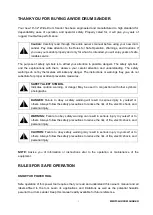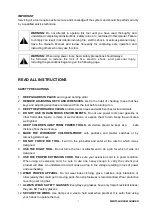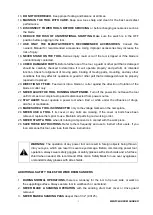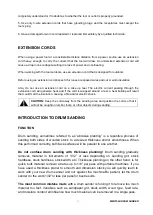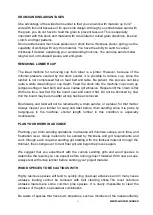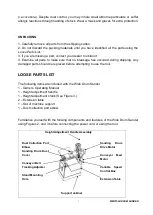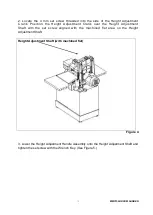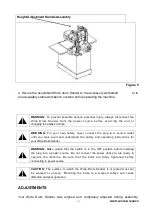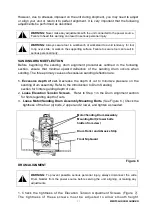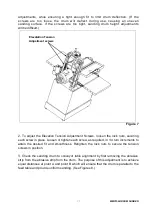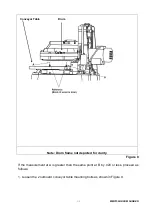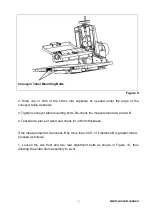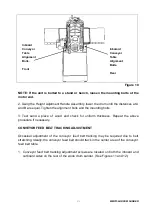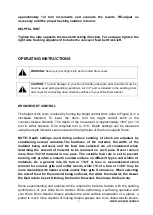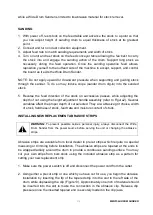
MM3156A DRUM SANDER
3
13.
DO NOT OVERREACH.
Keep proper footing and balance at all times.
14.
MAINTAIN THE TOOL WITH CARE.
Keep saw toos sharp and clean for the best and safest
performance.
15.
DISCONNECT POWER TOOLS BEFORE SERVICING
or before changing accessories such as
the blade.
16.
REDUCE THE RISK OF UNINTENTIONAL STARTING.
Make sure the switch is in the OFF
position before plugging in the tool.
17.
USE ONLY THE MANUFACTURER’S RECOMMENDED ACCESSORIES.
Consult this
owner’s Manual for recommended accessories. Using improper accessories may increase the
risk of injury.
18.
NEVER STAND ON THE TOOL.
Serious injury could occur if the tool is tipped or if the blade is
unintentionally contacted.
19.
CHECK DAMAGED PARTS.
Before further use of the tool, a guard or other part that is damaged
should be carefully checked to determine if it will operate properly and perform its intended
function. Check for alignment of moving parts, binding of moving parts, mounting, and any other
conditions that may affect its operation. A guard or other part that is damaged should be properly
repaired or replaced.
20.
DIRECTION OF FEED.
Feed work into a blade or cutter against the direction of rotation of the
blade or cutter only.
21.
NEVER LEAVE THE TOOL RUNNING UNATTENDED.
Turn off the power. Do not leave the tool
until it comes to a complete stop and is disconnected from power source.
22.
STAY ALERT.
Never operate a power tool when tired or while under the influence of drugs,
alcohol, or medication.
23.
MAKE SURE A TOOL IS CONNECTED
only to the voltage marked on the nameplate.
24.
NEVER USE A TOOL
if its cover or any bolts are missing. If the cover or bolts have been
removed, replace them prior to use. Maintain all parts in good working order.
25.
NEVER START A TOOL
when its rotating component is in contact with the work piece.
26.
SAVE THESE INSTRUCTIONS.
Refer to them frequently and use to instruct other users. If you
loan someone this tool, also loan them these instructions.
WARNING:
The operation of any power tool can result in foreign objects being thrown
into your eyes, which can result in severe eye damage. Before commencing power tool
operation, always wear safety goggles or safety glasses with side shields and a full face
shield when needed. We recommend Wide Vision Safety Mask for use over eyeglasses
or standard safety glasses with side shields.
ADDITIONAL SAFETY RULES FOR WIDE DRUM SANDERS
1.
DURING NORMAL OPERATIONS,
there is a tendency for the tool to tip over, side, or walk on
the supporting surface. Always secure tool to workbench or workstand.
2.
NEVER MAKE A SANDING OPERATION
with the sanding drum dust cover or drive guard
removed.
3.
NEVER MAKE A SANDING PASS
deeper than 1/32” (.03125).


